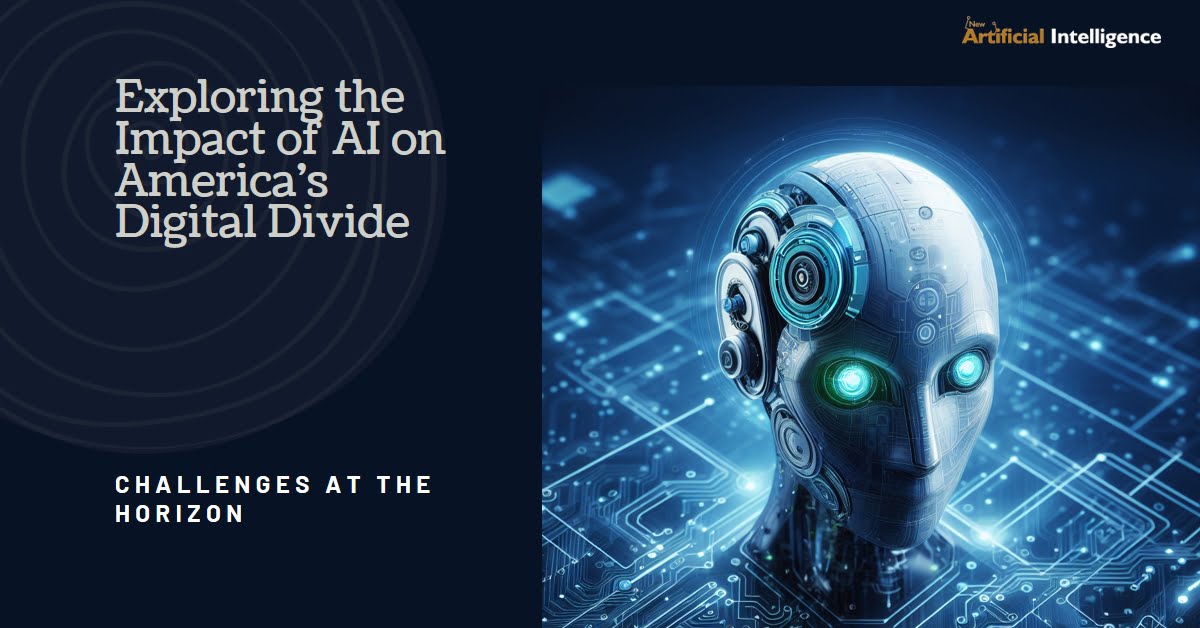AI Race: Can America Bridge the Digital Divide ?
Table of Contents
The worldwide AI race, a high-stakes sprint towards harnessing the transformative strength of artificial intelligence, has the sector watching with bated breath. In this fiercely aggressive panorama, the US charmingly unearths itself. Despite stiff opposition from China and the European Union, the United States boasts a fantastic cocktail of benefits that might propel it to the vanguard of this technological revolution. But is the American eagle hovering towards AI supremacy, or are its wings clipped with the aid of inner hurdles and outside challenges?
America’s AI Arsenal: A Wealth of Advantages
The US holds a formidable hand in the AI game. Its strengths include:
- Tech Giants and Venture Capital: Silicon Valley titans like Google, Microsoft, and Facebook are worldwide AI juggernauts, churning out present-day studies and attracting significant venture capital. This financial muscle fuels speedy innovation and skill acquisition.
- Top-Tier Universities and Research Institutions: The United States boasts a network of global-famous educational powerhouses churning AI talent and groundbreaking research from MIT and Stanford to Carnegie Mellon and Caltech. This fosters a sturdy instructional pipeline and a vibrant study ecosystem.
- Open-Source Culture and Collaboration: The US has a wealthy subculture of open-supply software development and collaborative research, facilitating record sharing and accelerating technological progress. This encourages a worldwide pool of builders to contribute to and construct upon American innovations.
- Firm Intellectual Property Framework: Robust patent safety incentivizes American groups to spend money on AI research and development, ensuring they attain the economic rewards of their improvements. This encourages persistent funding and risk-taking within the discipline.
- Government Initiatives and Funding: The US authorities, spotting AI’s strategic significance, have committed considerable assets to its development. Initiatives like the National Artificial Intelligence Initiative and the DARPA AI Grand Challenge provide critical investment and guidance, fostering public-non-public partnerships and accelerating progress.
Challenges at the Horizon: Obstacles to Overcome
While America boasts plain benefits, sizable limitations should obstruct its AI goals:
- Talent Shortage: Despite a robust academic pipeline, the United States needs more professional AI professionals. This talent gap hinders innovation and deployment, doubtlessly creating a bottleneck in the American AI environment.
- Data Privacy Concerns: Public anxieties surrounding data privacy and the potential misuse of AI ought to stifle innovation and erode public trust. Striking a balance between technological advancement and record protection is vital to preserving public assistance and avoiding moral roadblocks.
- Geopolitical Tensions: The US faces intense opposition from China and other countries, leading to concerns about approximately highbrow asset robbery, generation transfer restrictions, and geopolitical competition. Navigating this complex landscape and fostering international collaboration is vital for shared progress.
- Regulation and Ethical Considerations: As AI packages turn out to be larger, developing appropriate ethical frameworks and regulatory recommendations is crucial. Failure to deal with these problems ought to cause unintended effects and public backlash.
- Infrastructure Gaps: While positive areas boast present-day infrastructure, others lag. Bridging the virtual divide and ensuring equitable access to AI assets is vital for inclusive growth and stopping monetary disparities.

The Road Ahead: Navigating the AI Labyrinth
To preserve its aggressive facet, the United States needs to deal with these demanding situations and leverage its strengths actively:
- Investing in AI team of workers improvement: Fostering applications to educate and entice AI skills at all ranges, from STEM schooling to specialized teams of workers’ education tasks, is essential.
- Balancing innovation with facts and privacy: Implementing sturdy statistics safety frameworks and promoting AI ethics suggestions can construct public trust and inspire accountable development.
- Prioritizing worldwide collaboration: Fostering partnerships with allies and building bridges across cultural and geographical divides can drive collective development and address demanding situations worldwide.
- Developing bendy and inclusive policies: Crafting adaptable regulatory frameworks that address emerging moral concerns without stifling innovation is critical to accountable AI development.
- Bridging the digital divide: Prioritizing investments in infrastructure and broadband access throughout geographic and socioeconomic divides can ensure inclusive participation within the AI revolution.
The AI race isn’t a one-time dash; it’s a marathon of constant adaptation and evolution. However, the US can become a leader most effectively through strategically leveraging its strengths, addressing its challenges, and preserving a continuing awareness of ethics, inclusivity, and global collaboration. This is not simply a financial or technological war; it is a race to shape the future of humanity, and the choices America makes nowadays could have some distance-achieving results for generations to come.
FAQs:
Is the United States clearly in advance within the global AI race?
The US possesses specific blessings like tech giants, top universities, and an open-supply lifestyle, but additionally faces demanding situations like skills shortages, record privacy worries, and geopolitical tensions. Determining a clean chief in the dynamic AI panorama is complex, with China and the EU also boasting good-sized strengths. Ultimately, the global race may be a marathon of collaboration and edition, with unique gamers excelling in exclusive regions.
What can the United States do to preserve its AI competitiveness?
Investing in AI workforce improvement, balancing innovation with record privacy, prioritizing global collaboration, developing flexible regulations, and bridging the virtual divide is vital for America to stay a contender in the AI race. Addressing these demanding situations while retaining ethical and inclusive strategies can be critical to long-term achievement.
What particular examples of AI improvements exist in the US?
The USA boasts many cutting-edge improvements, from Google’s AI-powered language fashions like LaMDA to Microsoft’s breakthroughs in healthcare diagnostics with AI. Self-riding motors from groups like Tesla and Waymo constitute every other attractive front in American AI innovation. These examples are just a glimpse into the various and hastily evolving landscapes of US AI, showcasing its ability to impact multiple aspects of life significantly.












3 thoughts on “AI Race: Can America Bridge the Digital Divide or Get Lost in the Algorithmic Jungle?”